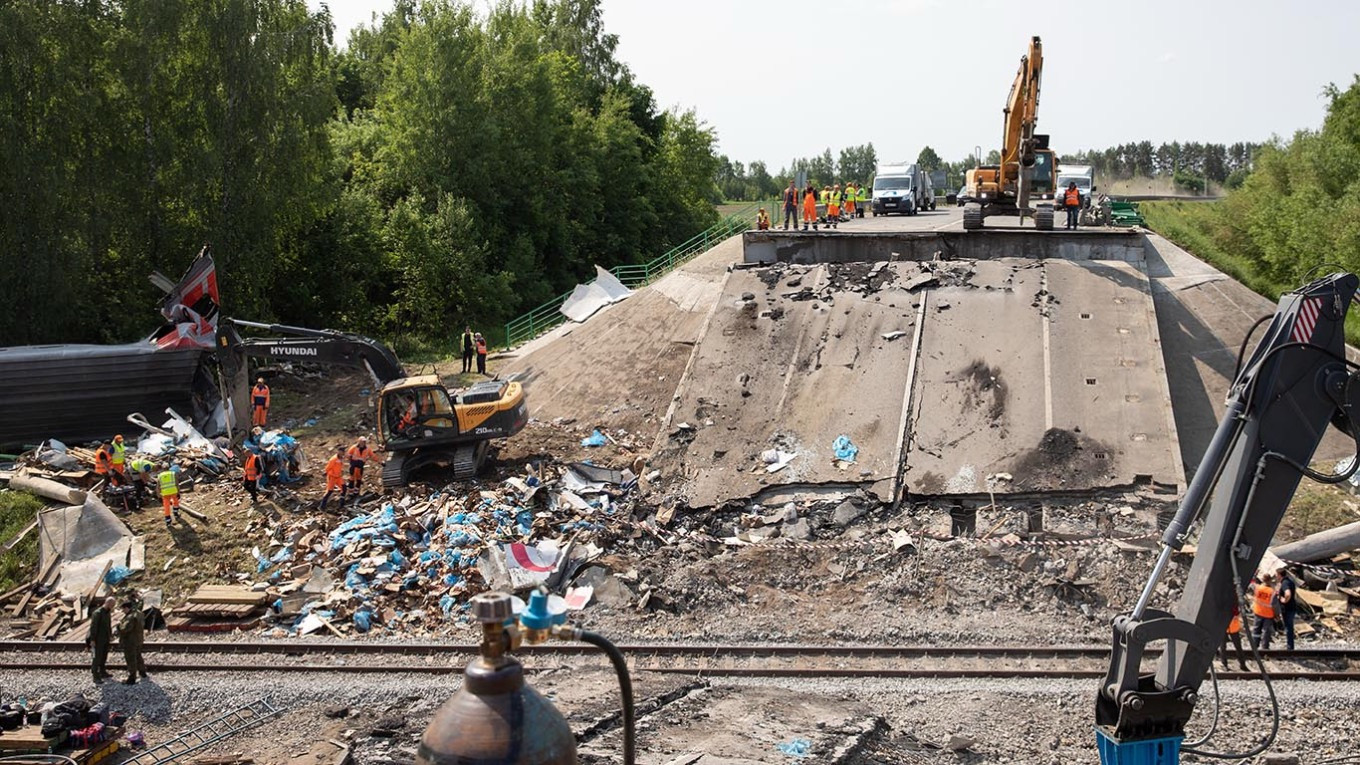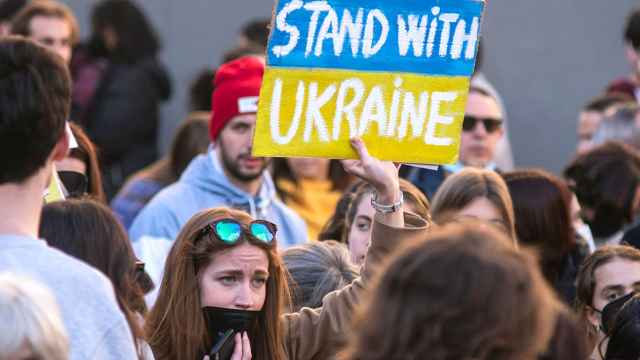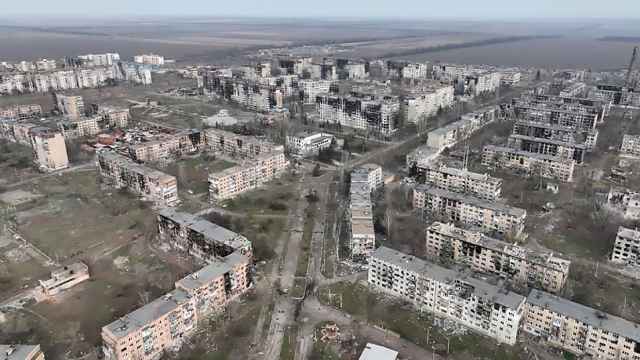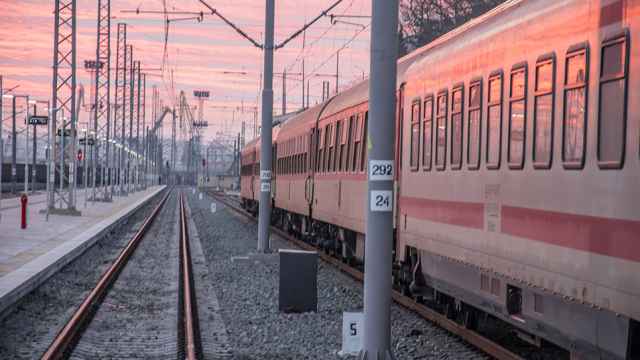In the same week that Russia experienced an unexpected drone attack on its airfields deep inside the country, explosions rocked several Russian railway tracks and the railway bridge into annexed Crimea was targeted with underwater explosives. Though these attacks lacked the novelty of Operation Spider’s Web, they underline the centrality of Russia’s railway network to its war effort.
Transport is a crucial component of Russia’s strategic security considerations, with political heavyweights appointed by the Kremlin to oversee the country’s roads, bridges, railway networks and its inland waterway system. It is also no accident that the chairman of the board at Russian Railways, Andrei Belousov, is also defense minister. Presidential aide Nikolai Patrushev also manages the development of Russia’s waterways, which have important military implications for Moscow’s relations with China and activities in the Arctic.
The link between transport and Russia’s strategic security is also enshrined in law. Since 2014, transport has been included among the so-called strategic sectors, alongside defense, oil and gas. The Kremlin considers these parts of the economy to be fundamentally important and upon which Russia’s national security rests, such as defense, oil and gas. Foreign investment in these enterprises is limited by law; they receive particular attention and funding from the federal center and usually play an important role in furthering Russia’s foreign and domestic policies, as well as its warfare.
Railway networks are the only way that Russia’s ground forces and materiel can travel around the country at speed and en masse. They were how Russian and Belarusian troops amassed on the border with Ukraine in February 2022 and remain the only way that Russian ground forces can be sustained on the battlefield for a long period of time.
Ukraine, Belarus and Russia all use the 1,520mm Soviet gauge, which made commandeering the railways to move Russian troops into Ukraine relatively straightforward. As Russia was pushed back, it attacked parts of Ukraine’s rail network in the early part of 2022 to prevent the country from maneuvering military reinforcements.
Russia’s neighbors are acutely aware of this too. In the early days of the war, Belarusian partisans blew up Russian railway signaling boxes to delay trains carrying military equipment to the front. They were subsequently dealt with harshly.
Ukraine also understood Russia’s reliance on its rail systems and has tried to destroy its own network to prevent Russia from pressing more deeply into Ukrainian territory, and to disrupt Russia’s railways inside the country, most notably in December 2023. In May 2025, neighboring Finland announced abruptly that it would be switching its entire network from the Russian to the European standard gauge system. Although this overhaul will not be fully operational until 2032, the security implications are clear — this is to prevent any future Russian land incursion.
But Russia’s rail network is not as vulnerable as it seems. Although Russia’s railway lines are long and seemingly unguarded, particularly in the Far East. As the Ukrainians have seen, disrupting traffic for longer than a few days has proven difficult.
In part, this is because Russia has a specific railway brigade, an auxiliary wing of the armed forces, which is tasked with the swift repair of its network should it come under attack. The Railway Troops are an important part of the rear. They have been used to resupply the front line in conflicts such as Chechnya and perform an important civilian function during natural disasters by keeping traffic moving. The brigade has evolved over decades to repair damaged tracks at pace, including during warfare, and so Ukraine’s attempts to subvert railway lines and damage bridges tend to only present a temporary stumbling block.
More broadly, Russia also has a supply chain problem with spare locomotive parts, exacerbated by the sanctions, as many of the parts were previously imported. This creates problems with loading capacities, with frequent breakdowns on the network due to a lack of spare parts such as bearings and electronic components. Reports of railcars idling, running slowly and clogging up the network are well documented.
Russia’s broader demographic issues resulting from the loss of a significant chunk of the labor force to the armed forces have resulted in understaffing at repair plants. Russia is trying to substitute these parts with Russian-made alternatives, but the technology will take time to come onto the market.
There are other, more general threats to Russia’s infrastructure. Climate change is melting the permafrost on top of which many railways are built, causing the land to buckle. Seasonal floods are increasing in scope each year. The wear and tear these processes cause as they warp the tracks will need to be repaired.
Hardware aside, Russia’s railway software has encountered serious problems. Until it left Russia in April 2022, Siemens Mobility coordinated Russia’s high-speed railway software, which helped monitor the maintenance of the railways. Russian developers had to swiftly replace the system with a domestic model. But the system is not fully automated. While it is working on growing digitalization, this in itself leaves the network vulnerable to attack, and has implications for Russia’s ability to move its troops around at pace.
All of this highlights the importance of infrastructure throughout this war — and others — without which Russia would be unable to mobilize and sustain its forces. The levels of funding and political attention dedicated to Russia’s transport networks indicate the important strategic position that infrastructure occupies in the minds of senior decision-makers in Moscow. Russia’s current planning suggests that these networks will continue to be at the core of its warfighting and foreign policy strategies in the years to come.
A Message from The Moscow Times:
Dear readers,
We are facing unprecedented challenges. Russia's Prosecutor General's Office has designated The Moscow Times as an "undesirable" organization, criminalizing our work and putting our staff at risk of prosecution. This follows our earlier unjust labeling as a "foreign agent."
These actions are direct attempts to silence independent journalism in Russia. The authorities claim our work "discredits the decisions of the Russian leadership." We see things differently: we strive to provide accurate, unbiased reporting on Russia.
We, the journalists of The Moscow Times, refuse to be silenced. But to continue our work, we need your help.
Your support, no matter how small, makes a world of difference. If you can, please support us monthly starting from just $2. It's quick to set up, and every contribution makes a significant impact.
By supporting The Moscow Times, you're defending open, independent journalism in the face of repression. Thank you for standing with us.
Remind me later.






